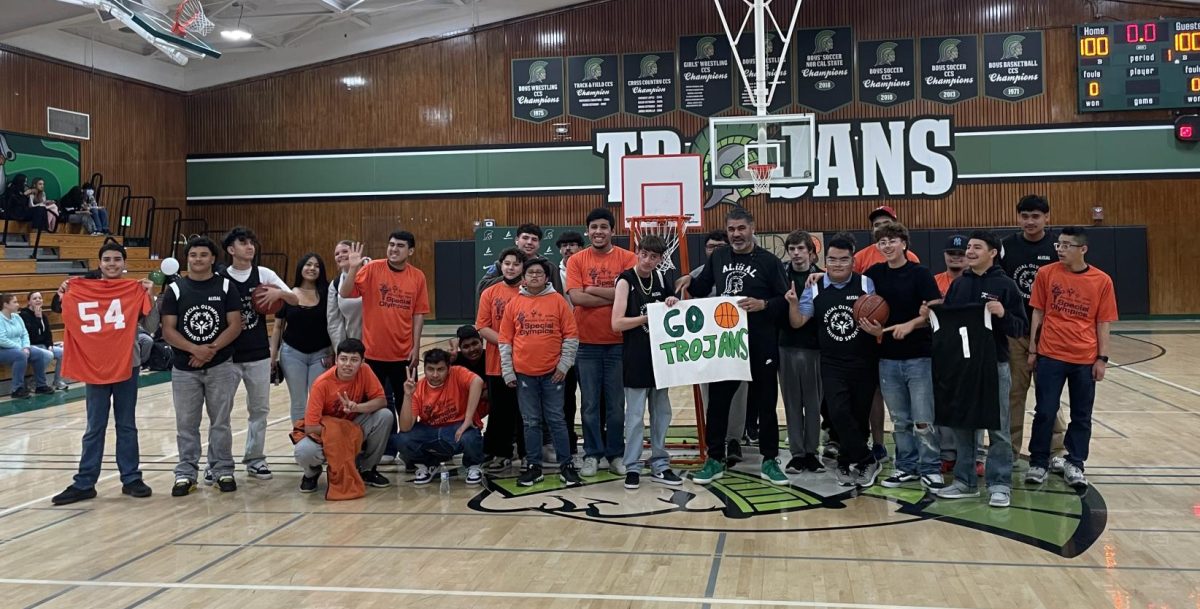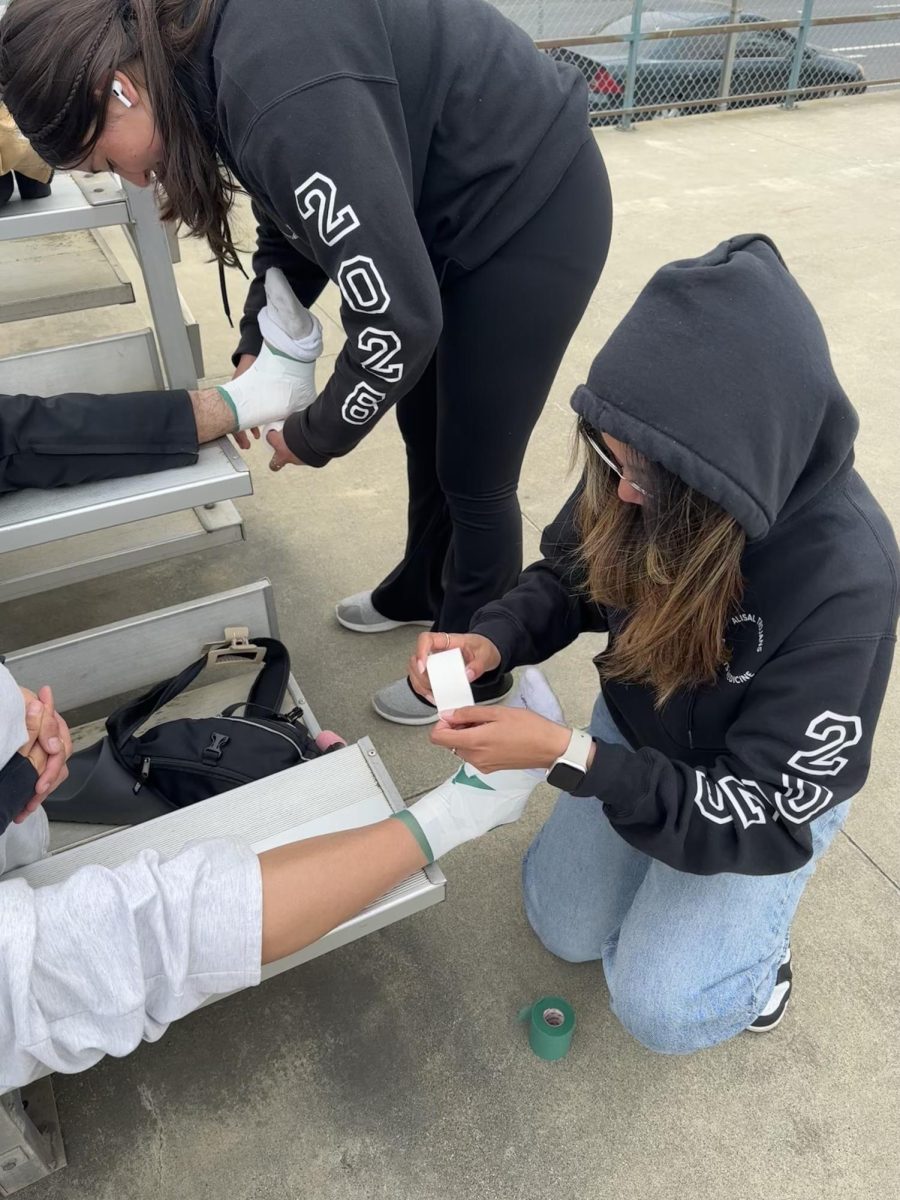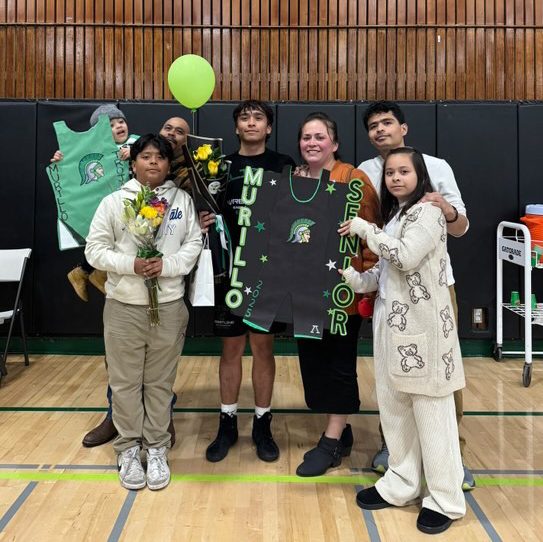Students go to school to learn, to grow, to develop, to improve, to mature, and the list goes on. What students shouldn’t do is go to school with the fear and paranoia that someone who is armed might barge into their classroom, a nearby classroom, or any classroom in general to start bloodshed.
As of now, there have been a total of 481 mass shootings this year, 319 of those taking place in schools. “I knew that school shootings happen a lot but knowing the exact amount makes it a lot more scary,” senior Brianna Castro said.
According to a CNN article, more mass shootings happen in K-12 schools than on college campuses. That being said, it’s important for all students and staff to have some sort of preparation just in case an event like this were to happen. A majority of schools do already take precautions like practicing lockdown/intruder drills, but not all do.
According to Mick Battaglini, who teaches AP English and Yearbook/Journalism, teachers did have training on this but things have changed. “The District has offered days where staff could participate in an active shooter drill, as well as videos going over active shooter scenarios,” Battaglini said. “But we haven’t had the videos the last couple of years.” He also said the students had a PBIS lesson using the same active shooter video pre-Covid lockdown, which he feels should be part of any safety plan.
“Having preparation on this issue is extremely important as it’s an unexpected event that can take place anywhere and at any time,” senior Yaharia Parra said. “Lockdown drills should be done every school year especially since there’s always a new grade level coming in.”
However, the District is working on a training program called “The Big Five” which is already used by several local schools in the county and in the state. It’s said to prepare teachers, students, and families for what to expect and how to respond in any emergency, which was just recently introduced this month.
“Knowing what to do in a crisis can significantly reduce panic, confusion, and potential harm,” Kari Yeater, Assistant Superintendent of Student Services, said. “Preparedness can empower students, giving them a sense of control and the knowledge to respond effectively in a variety of emergencies.”
The District also has set key focus areas for this school year which are:
- To schedule monthly emergency drills (fires, shelter in place, lockdown, evacuations, etc.)
- Develop emergency plans with input from students, staff, emergency responders, etc.
- Work on informing staff, students, and parents on how to communicate during an emergency
- Prioritize mental health support, offer accessible counseling services, train teachers to recognize signs of distress, and normalize the idea that it’s perfectly okay to ask for help
- Have each classroom and common area have an emergency kit and to replace/add as needed
- Work on improving communication systems to quickly alert students, parents, and staff in the event of an emergency
The security staff here on campus have had several training sessions revolving around this issue, their last one was actually this past summer in July, where they learned how to de-escalate, observe, and know what to do in different situations (emergencies). “That’s one big thing I’ve been telling my coworkers and the school, not just the students but [staff] in general too, I think we should train multiple times a year because we never know,” Isaac Santa Cruz, a security officer here on campus, said. “It’s better to be prepared than not…there’s like 3,000 plus kids so it doesn’t hurt to train more.”
Some teachers themselves have taken matters into their own hands and created their own class plan for a potential shooting according to Castro.
“One of my teachers who has a plan has definitely made me feel safer because of it,” Castro said. “I know that if there is ever a school shooter, that is the classroom I will run to. It provides me with a safety net because I know my teacher understands that it’s a real risk that some of us are afraid of.”
“Every student should have the option to have some sort of training or watch/participate in a lesson,” Ignacio Mendez, who teaches English 12 and AP literature, said. “Staff should also have an expert in these cases come and talk to them and possibly demonstrate ways to remain safe.”
However, Principal Christina Perez thinks we are ready and prepared. “We’ve had enough [lockdown drills] that we know what to do, and I can lock the school down within 3 minutes.”
Fortunately, living in California compared to other states, where gun violence is more extreme, we don’t experience many mass shootings, especially school shootings. This year, only 3 school shootings have happened in California, in Sacramento, Oakland, and Oroville.
Despite that, in mid September, an email/text was sent to teachers and parents in the Alisal Union School District about threats allegedly being made to two schools (Creekside and John E. Steinbeck Elementary). Once the police investigated, the threats turned out to be false, but it still caused a worry to many parents, teachers, and students. This situation being local definitely made it more real for some people, and eye-opening to the thought that something tragic could in fact happen in an elementary, middle, and/or high school in our city.
“As a former student at Alisal High and as a teacher in my 23rd year, I have always felt safe at Alisal,” Mendez said. “The only times I remotely feel unsafe is when there is a school shooting and the media blitz coverage is everywhere, [also] the fact that students bring it up at school [which] reminds me of the possibility that any second, minute, day or week something like that can happen.”
Although bringing awareness to gun violence, and openly speaking about it might bring a traumatic feeling to many, not speaking on it and having it later negatively affect a situation even more, is worse.
We don’t know how everyone will react. Some may freeze in fear, while others might take action. It’s important that despite not wanting to think of the worst that could happen, it will be beneficial later on. Every student, even in elementary school which is sad to think about, should know the possibility of an event like this happening and be informed about certain steps that can be taken to potentially save themselves and others.
“It’s important for students to know what to do in the case of gun violence at school, however, be confident in knowing that I [do] everything in my power to ensure that [we] are safe,” Perez said.
The school is very preventative when it comes to this issue. Probation cars are stationed at the front entrance every morning, during lunch, and after school as a deterrent.
Every school has a School Probation Officer, who is assigned to protect the campus. They are here to respond to threats, manage emergency situations, and to build positive relationships with students.
Both our probation staff and district coordinator have been trained numerous times on an active shooting, and do feel prepared that they will know what to do if something ever does go wrong, but again feel like they could use more of the training. “We have the support from other local agencies that would assist if [a shooting] were to happen, it won’t just be us,” Arlene Tamayo, the probation officer here on campus, said. “It’s going to be Salinas PD, the Sheriff’s Department, so we have the support.” Tamayo also wants to make it clear that law enforcement and the school have a plan, and students should know that they are safe. That plan includes several different procedures that are reviewed with the staff, that is developed by a committee. It’s important to know that due to most things being situational, that plan can be adjusted depending on what’s going on. The school doesn’t want to share all the specifics as they don’t want everyone to know the exact details.
“[Students’] safety is my priority,” Perez said. “Not only [the students], but I have an obligation to get the staff back to their families as well, because this is our community, our kids, our family.”























